70 Content Marketing Statistics to Bookmark for 2024
Each year we pick, vet, and categorize a list of up-to-date statistics to give you insight from hundreds of marketers on trends, best practices, or simply things that work in content marketing. In this section, you’ll find the...
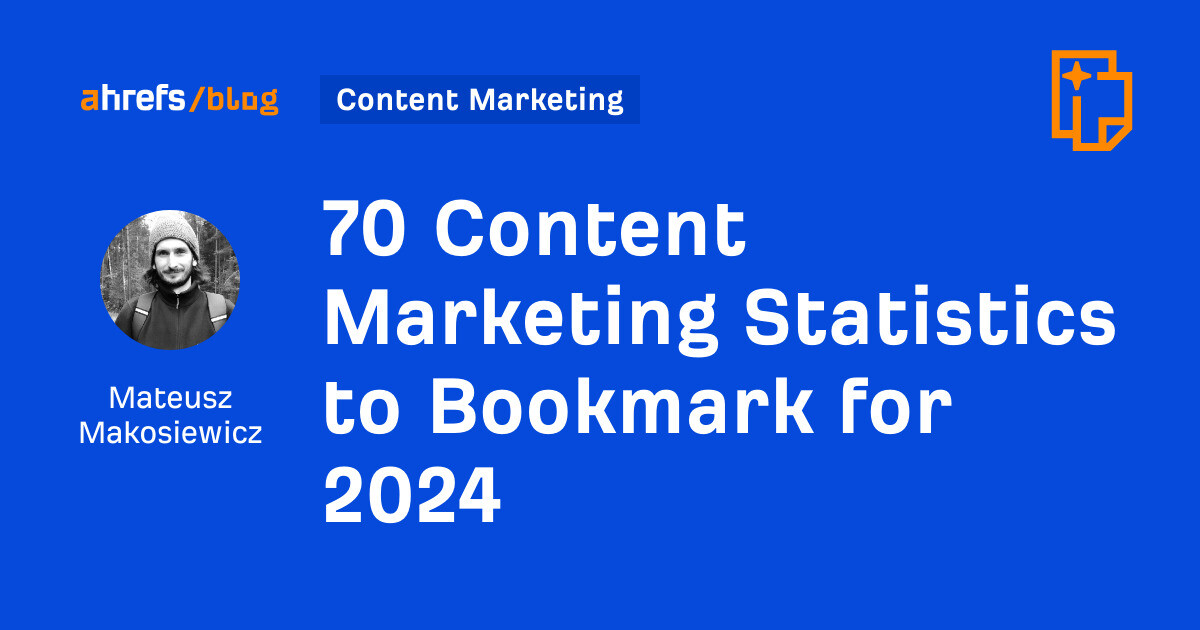
Article Performance
Data from Ahrefs
The number of websites linking to this post.
This post's estimated monthly organic search traffic.
Welcome to the 2024 edition of our curated list of content marketing statistics. Each year we pick, vet, and categorize a list of up-to-date statistics to give you insight from hundreds of marketers on trends, best practices, or simply things that work in content marketing. In this section, you’ll find the most interesting content marketing statistics we think you should know. Everyone who has ever reached for the “AI boost” probably asked themselves the same question — do others do it too? Well, some of us at Ahrefs use AI quite often, and even our product has AI features like suggestions for keyword research, so we’ve run a quick poll to find out how many other marketers are already using AI. https://twitter.com/ahrefs/status/1722207395232014777 We found that almost 80% of our respondents had already adopted AI tools in their content marketing strategies. Another 10% plan to, and only a minority of 10% don’t plan to use any AI for content. My guess is that the remaining 10% of non-adopters are not just being “neutral” about AI — they’ve decided not to use it (yet) and likely not just ignored the tech. Here are some other statistics on the use of AI tools in content marketing that caught our attention: A view on content marketing from a high-level perspective. As you know, B2B marketing differs from B2C: one sells to other businesses, the other direct to individual people. So we’re going to look at data from these two sectors separately, starting with B2B. Now let’s get some insight into the B2C sector. Organic search is definitely one of the biggest channels for content marketing. No wonder — consumers still like to use Google to learn and buy products and services. And that’s where content marketers fight for their attention while trying to “prove” to Google that they deserve the best spot in search results. Blogging is the cornerstone of many, if not most, content marketing strategies. So we dug out a few interesting statistics specifically for bloggers: from traffic sources, reader engagement insights, to types of content published on blogs. And just to put things into perspective — the number of all blogs on the web, too. Text is probably the first thing that comes to mind when you think about content. But in fact, video is the most popular type of content created by marketers. What’s more, according to Hubspot’s annual State of Marketing Report, it’s been this way in the content marketing world for at least the past four years. Podcasts are a relatively new type of content, but they’re spreading fast and have gone mainstream already. If you’re not ready to create this type of content yet, consider advertising — consumption of podcasts keeps rising, and people find ads in that space way less intrusive than YouTube (see below). This year we added a special section for email marketing. It definitely deserves its own space, since so many marketers use email for content distribution. Content is the pillar of marketing at Ahrefs, so in case you’d like to learn more about this type of marketing, we’re sharing some of our thoughts and experiences below: Got questions or interesting data to share? Ping me on X. 40% of B2B marketers have a documented content marketing strategy. That percentage is higher among the most successful B2B marketers — 64% have a documented content marketing strategy. (Content Marketing Institute)69% of marketers actively invest time in SEO. (HubSpot)76% of marketers report that content marketing generates demand/leads (a 9 percentage points increase since last year). In addition, 63% of marketers say that content marketing helps to nurture the audience/customers/leads, and 50% say that it helps build loyalty with existing clients/customers (a 13 percentage points decrease). (CMI)Video was the primary form of content being created in 2023 (50%), images (47%), and blogs (33%). (HubSpot)73% of people admit to skimming blog posts, while 27% consume them thoroughly. (HubSpot)51% of the businesses that invest in content marketing publish content every day. (The Manifest)44% say they typically consume three to five pieces of content before engaging with a vendor. (DemandGen)73% of respondents prefer to learn about a product or service from a short video. 11% prefer to read a text-based article, website, or post. 4% prefer to view an infographic. 3% prefer to download an ebook or manual. 3% prefer to attend a webinar or pitch. 3% prefer to receive a sales call or demo. (Wyzowl)81% of marketers view content as a core business strategy. (CMI)
40% of B2B marketers have a documented content marketing strategy. That percentage is higher among the most successful B2B marketers — 64% have a documented content marketing strategy. (Content Marketing Institute)69% of marketers actively invest time in SEO. (HubSpot)76% of marketers report that content marketing generates demand/leads (a 9 percentage points increase since last year). In addition, 63% of marketers say that content marketing helps to nurture the audience/customers/leads, and 50% say that it helps build loyalty with existing clients/customers (a 13 percentage points decrease). (CMI)Video was the primary form of content being created in 2023 (50%), images (47%), and blogs (33%). (HubSpot)73% of people admit to skimming blog posts, while 27% consume them thoroughly. (HubSpot)51% of the businesses that invest in content marketing publish content every day. (The Manifest)44% say they typically consume three to five pieces of content before engaging with a vendor. (DemandGen)73% of respondents prefer to learn about a product or service from a short video. 11% prefer to read a text-based article, website, or post. 4% prefer to view an infographic. 3% prefer to download an ebook or manual. 3% prefer to attend a webinar or pitch. 3% prefer to receive a sales call or demo. (Wyzowl)81% of marketers view content as a core business strategy. (CMI)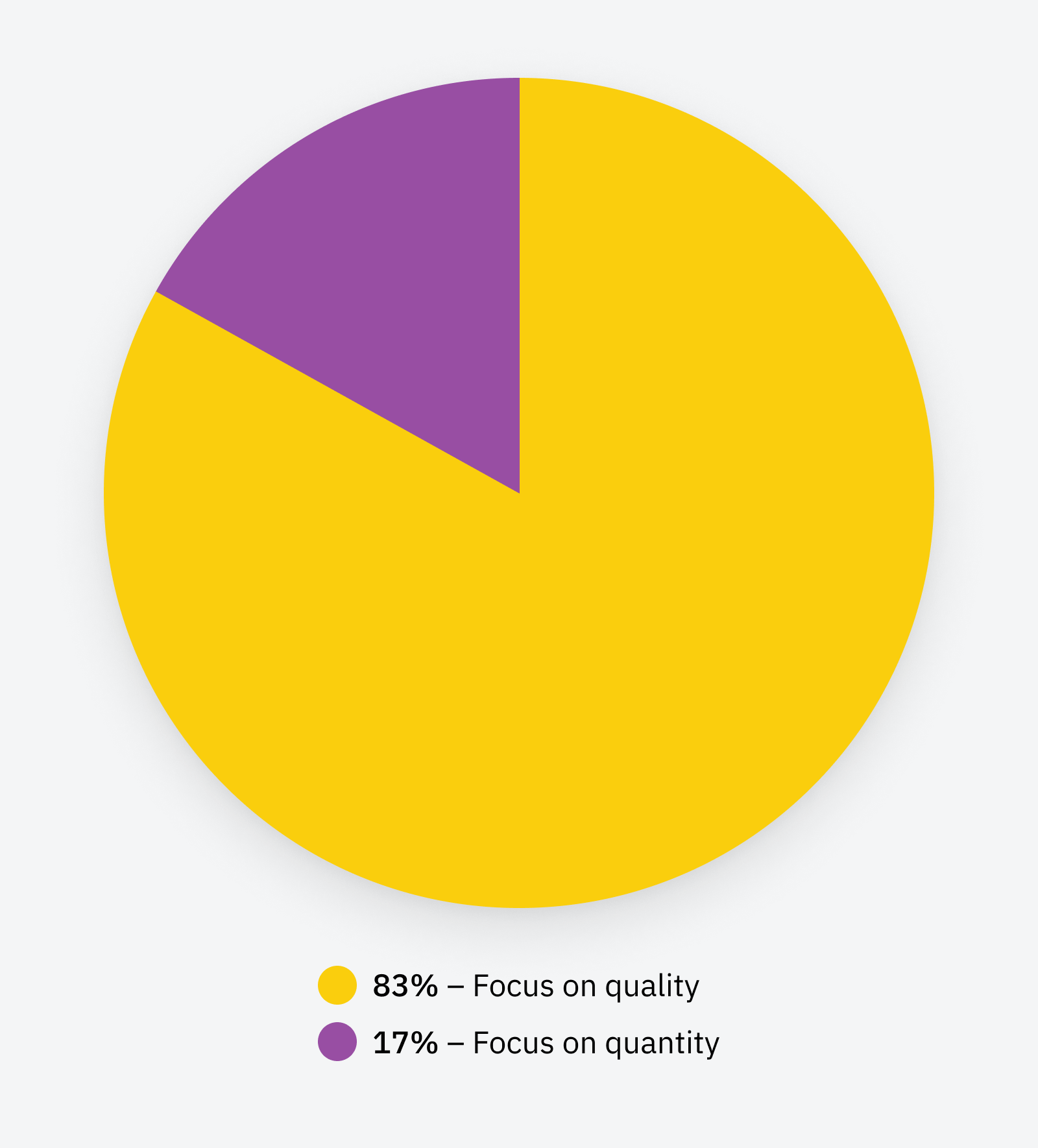 The top three primary goals of creating content are boosting sales, building relationships with customers, and increasing brand awareness. (eMarketer)Content marketing generates over 3x as many leads as outbound marketing and costs 62% less. (Demand Metric)72% of the most successful marketers in North America measure the ROI of their content marketing. (eMarketer)
The top three primary goals of creating content are boosting sales, building relationships with customers, and increasing brand awareness. (eMarketer)Content marketing generates over 3x as many leads as outbound marketing and costs 62% less. (Demand Metric)72% of the most successful marketers in North America measure the ROI of their content marketing. (eMarketer) Most B2B marketers try to differentiate from the competition by content quality (83%) and covering untapped topics/stories (72%). (CMI)Top 3 performing B2B content assets in 2023 were case studies/customer stories, videos, and thought leadership e-books/white papers. (CMI)87% of B2B marketers prioritize the audience’s informational needs over the organization’s sales/promotional messages. (CMI)LinkedIn is used for marketing by 96% of B2B content marketers. (CMI)84% of marketers voted for LinkedIn as the best-performing social media platform, followed by Facebook (29%) and YouTube (22%). (CMI)78% of B2B marketers employ keyword research for SEO while creating content. (CMI)
Most B2B marketers try to differentiate from the competition by content quality (83%) and covering untapped topics/stories (72%). (CMI)Top 3 performing B2B content assets in 2023 were case studies/customer stories, videos, and thought leadership e-books/white papers. (CMI)87% of B2B marketers prioritize the audience’s informational needs over the organization’s sales/promotional messages. (CMI)LinkedIn is used for marketing by 96% of B2B content marketers. (CMI)84% of marketers voted for LinkedIn as the best-performing social media platform, followed by Facebook (29%) and YouTube (22%). (CMI)78% of B2B marketers employ keyword research for SEO while creating content. (CMI)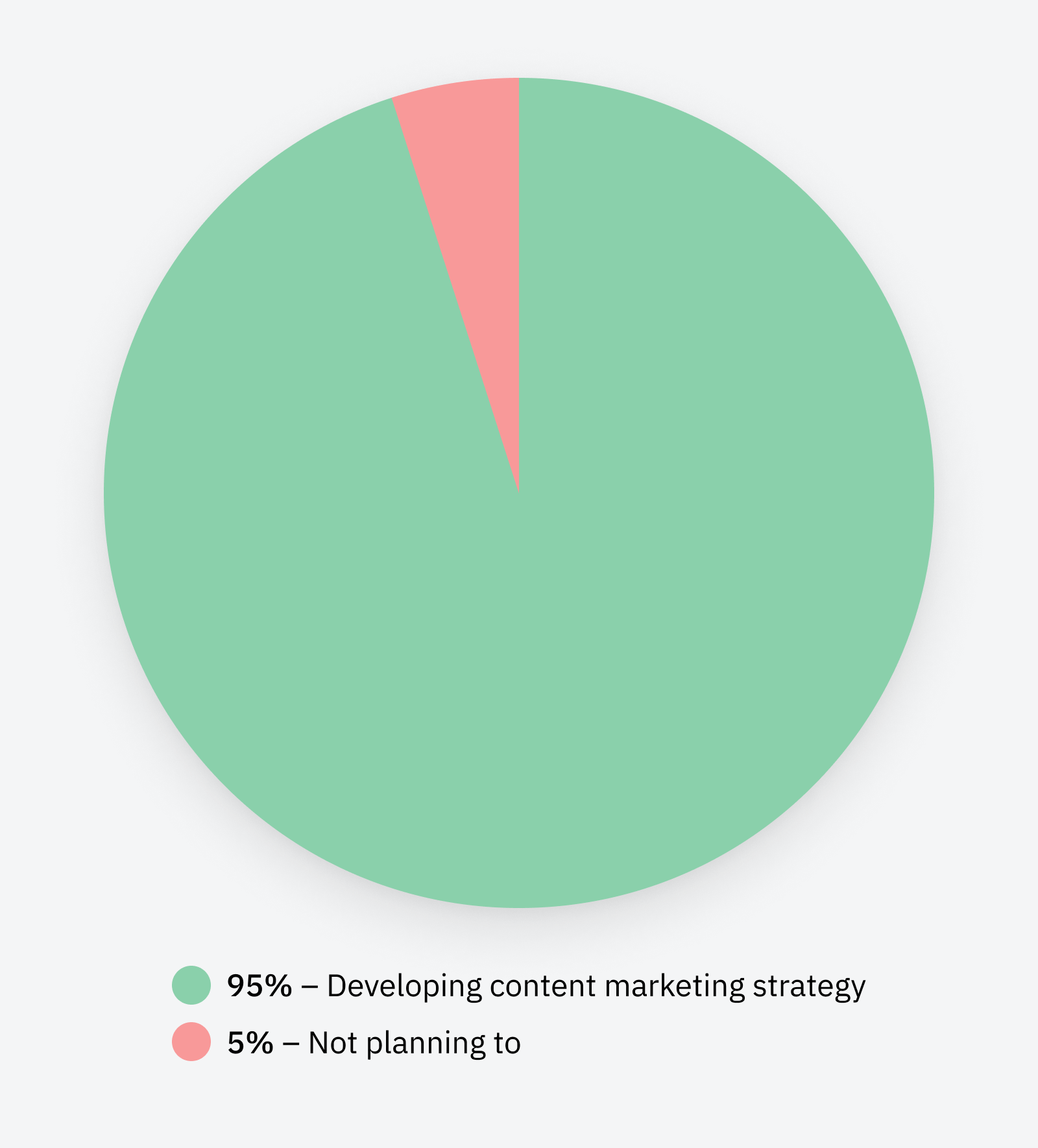 65% of B2C marketers prioritize the audience’s informational needs over the organization’s sales/promotional messages. (CMI)Top performing B2C content assets in 2021 and 2022 were short articles (less than 3k words), videos, and data visualization/3D models. (CMI)B2C marketers who use nonpaid social media platforms report that Facebook (63%), LinkedIn (53%), and Instagram (39%) produced the best overall content marketing results. (CMI)Only 22% of B2C marketers don’t use paid content distribution channels. (CMI)73% of B2C marketers employ keyword research for SEO when creating content. (CMI)
65% of B2C marketers prioritize the audience’s informational needs over the organization’s sales/promotional messages. (CMI)Top performing B2C content assets in 2021 and 2022 were short articles (less than 3k words), videos, and data visualization/3D models. (CMI)B2C marketers who use nonpaid social media platforms report that Facebook (63%), LinkedIn (53%), and Instagram (39%) produced the best overall content marketing results. (CMI)Only 22% of B2C marketers don’t use paid content distribution channels. (CMI)73% of B2C marketers employ keyword research for SEO when creating content. (CMI)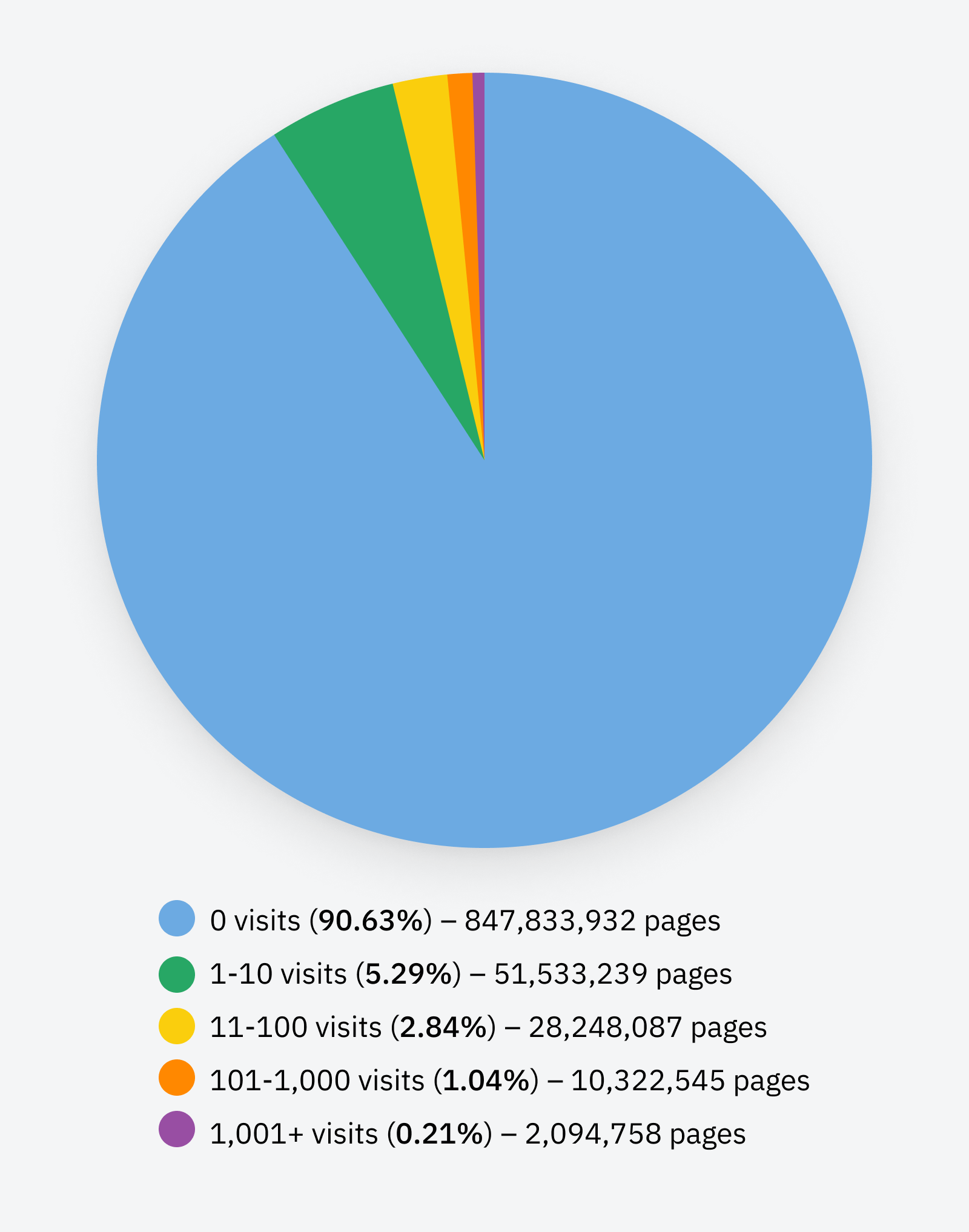 68% of online experiences begin with a search engine. (Brightedge)Google is the most widely used search worldwide, with 91.53% of the market (as of October 2023). Even though Bing was the quickest to the market with the AI search feature, it didn’t help the search engine cross the 4% market share (Statcounter). 71% of B2B researchers start their research with a generic search instead of branded search. (Google)53% of shoppers say they always do research before a purchase to ensure they are making the best possible choice. (Google)Only 5.7% of pages will rank in the top 10 search results within a year of publication. (Ahrefs)Almost two-thirds of global online search comes from mobile devices. (Perficient)Generally speaking, the more backlinks a page has, the more organic traffic it gets from Google. (Ahrefs)The average #1 ranking page will also rank in the top 10 for nearly 1,000 other relevant keywords. (Ahrefs)There’s no correlation between Flesch Reading Ease scores and ranking positions. (Ahrefs)
68% of online experiences begin with a search engine. (Brightedge)Google is the most widely used search worldwide, with 91.53% of the market (as of October 2023). Even though Bing was the quickest to the market with the AI search feature, it didn’t help the search engine cross the 4% market share (Statcounter). 71% of B2B researchers start their research with a generic search instead of branded search. (Google)53% of shoppers say they always do research before a purchase to ensure they are making the best possible choice. (Google)Only 5.7% of pages will rank in the top 10 search results within a year of publication. (Ahrefs)Almost two-thirds of global online search comes from mobile devices. (Perficient)Generally speaking, the more backlinks a page has, the more organic traffic it gets from Google. (Ahrefs)The average #1 ranking page will also rank in the top 10 for nearly 1,000 other relevant keywords. (Ahrefs)There’s no correlation between Flesch Reading Ease scores and ranking positions. (Ahrefs)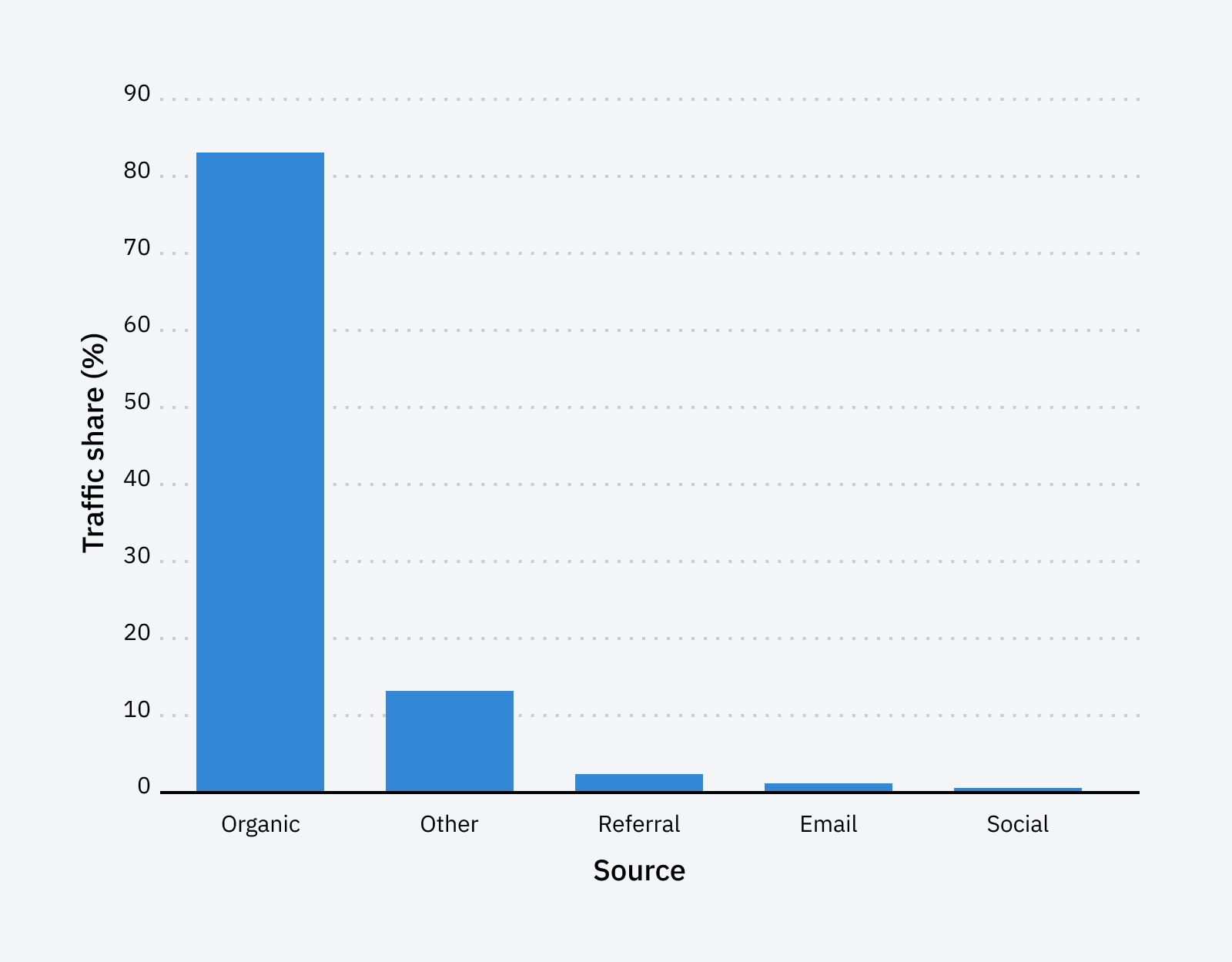 On average, engagement starts to drop after 7 minutes of reading. (Medium)People rarely read online — a pattern that hasn’t changed since 1997. They’re far more likely to scan than read word for word. They simply want to pick out the information that is most pertinent to their current needs. (Nielsen)70% of people rather get information from blogs than traditional advertisements. (Demand Metric)How-to articles are the most popular content formats (76%), followed by lists (55%), and news and trends (47%). (Orbit Media)Only one-third of bloggers regularly check their blog’s traffic analytics. (Statista)There are more than 600 million blogs out of 1.9 billion websites in the world. Their authors account for over 6 million blog posts daily, or over 2.5 billion annually. (Web Tribunal)
On average, engagement starts to drop after 7 minutes of reading. (Medium)People rarely read online — a pattern that hasn’t changed since 1997. They’re far more likely to scan than read word for word. They simply want to pick out the information that is most pertinent to their current needs. (Nielsen)70% of people rather get information from blogs than traditional advertisements. (Demand Metric)How-to articles are the most popular content formats (76%), followed by lists (55%), and news and trends (47%). (Orbit Media)Only one-third of bloggers regularly check their blog’s traffic analytics. (Statista)There are more than 600 million blogs out of 1.9 billion websites in the world. Their authors account for over 6 million blog posts daily, or over 2.5 billion annually. (Web Tribunal)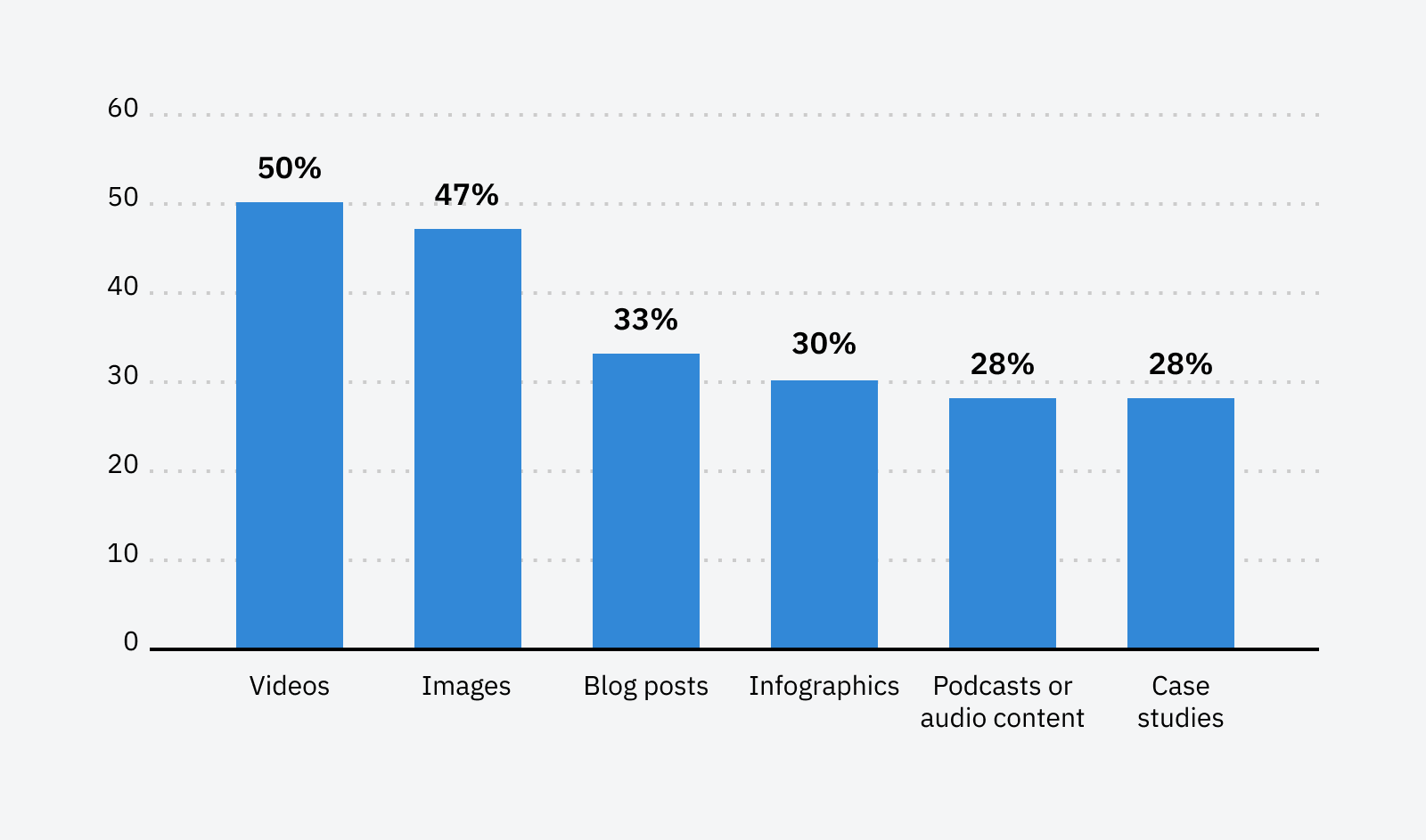 70% of viewers bought a product after seeing it on YouTube. (Google)79% of people say they’ve been convinced to buy or download a piece of software or app by watching a video (a 1 percentage point increase since last year). (Wyzowl)YouTube is the #1 visited website in the U.S. by organic traffic. (Ahrefs)YouTube reaches more 18 to 49-year-olds in an average week than all cable TV networks combined. (Google)Short-form videos (TikTok, IG Reels) and live streaming were the most effective formats on social media in 2022. (Hubspot)Video viewers say relating to their passions is 1.6X more important than content with high production quality. (Google)91% of businesses use video as a marketing tool (a 5 percentage points increase since last year). (Wyzowl)96% of people have watched an explainer video to learn more about a product or service. (Wyzowl)91% of people wanted to see more videos from brands in 2023 (a 3 percentage points increase since last year). (Wyzowl)
70% of viewers bought a product after seeing it on YouTube. (Google)79% of people say they’ve been convinced to buy or download a piece of software or app by watching a video (a 1 percentage point increase since last year). (Wyzowl)YouTube is the #1 visited website in the U.S. by organic traffic. (Ahrefs)YouTube reaches more 18 to 49-year-olds in an average week than all cable TV networks combined. (Google)Short-form videos (TikTok, IG Reels) and live streaming were the most effective formats on social media in 2022. (Hubspot)Video viewers say relating to their passions is 1.6X more important than content with high production quality. (Google)91% of businesses use video as a marketing tool (a 5 percentage points increase since last year). (Wyzowl)96% of people have watched an explainer video to learn more about a product or service. (Wyzowl)91% of people wanted to see more videos from brands in 2023 (a 3 percentage points increase since last year). (Wyzowl)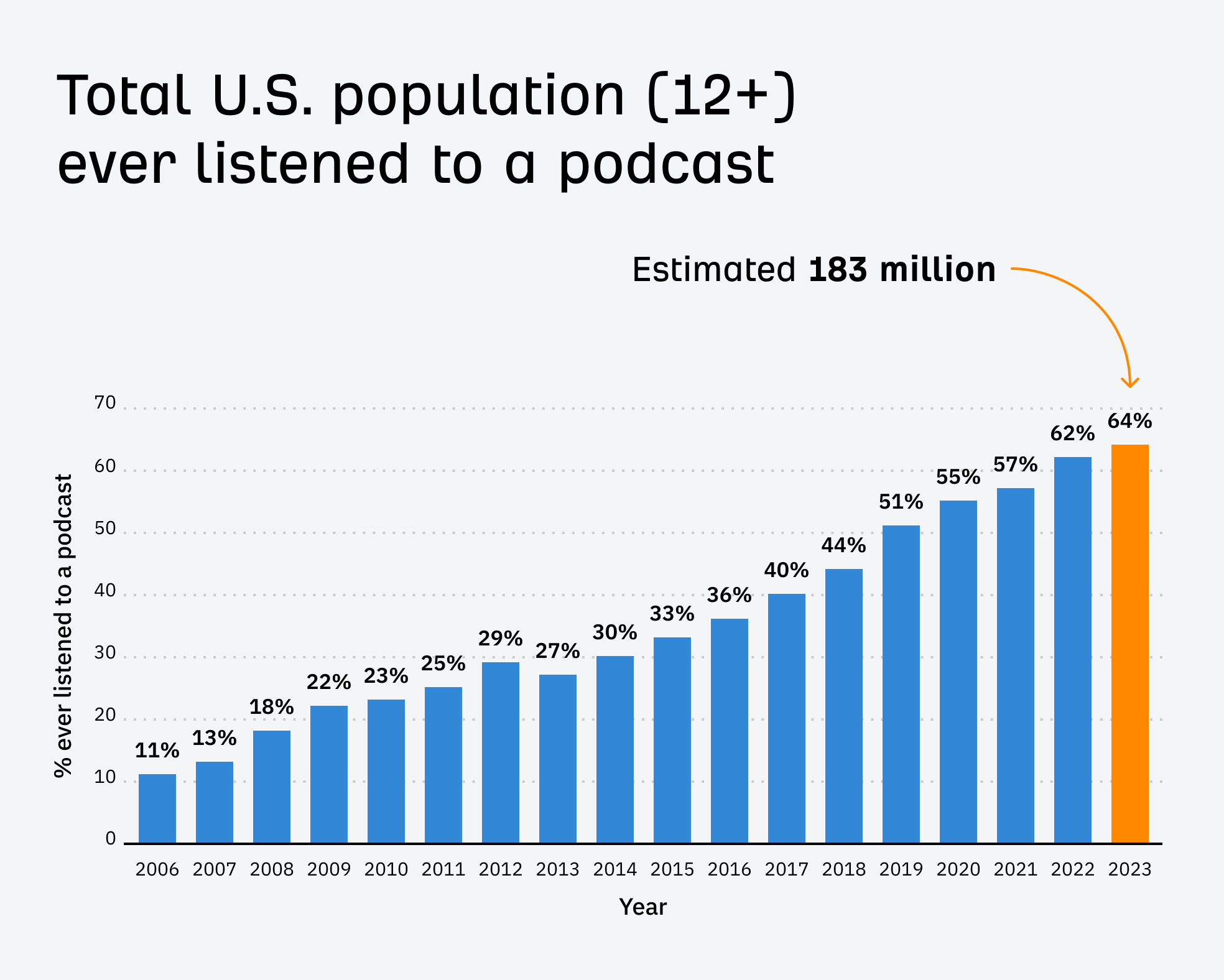 46% of monthly podcast listeners say that ads on podcasts are not intrusive. That’s a 23 percentage points higher than YouTube. (Edison Research)80% of podcast listeners listen to all or most of each episode. (Podcast Insights)Podcast ad spending in the U.S. is expected to reach $2.56B in 2024, a 16.3 percentage points increase from 2023. (Statista)
46% of monthly podcast listeners say that ads on podcasts are not intrusive. That’s a 23 percentage points higher than YouTube. (Edison Research)80% of podcast listeners listen to all or most of each episode. (Podcast Insights)Podcast ad spending in the U.S. is expected to reach $2.56B in 2024, a 16.3 percentage points increase from 2023. (Statista)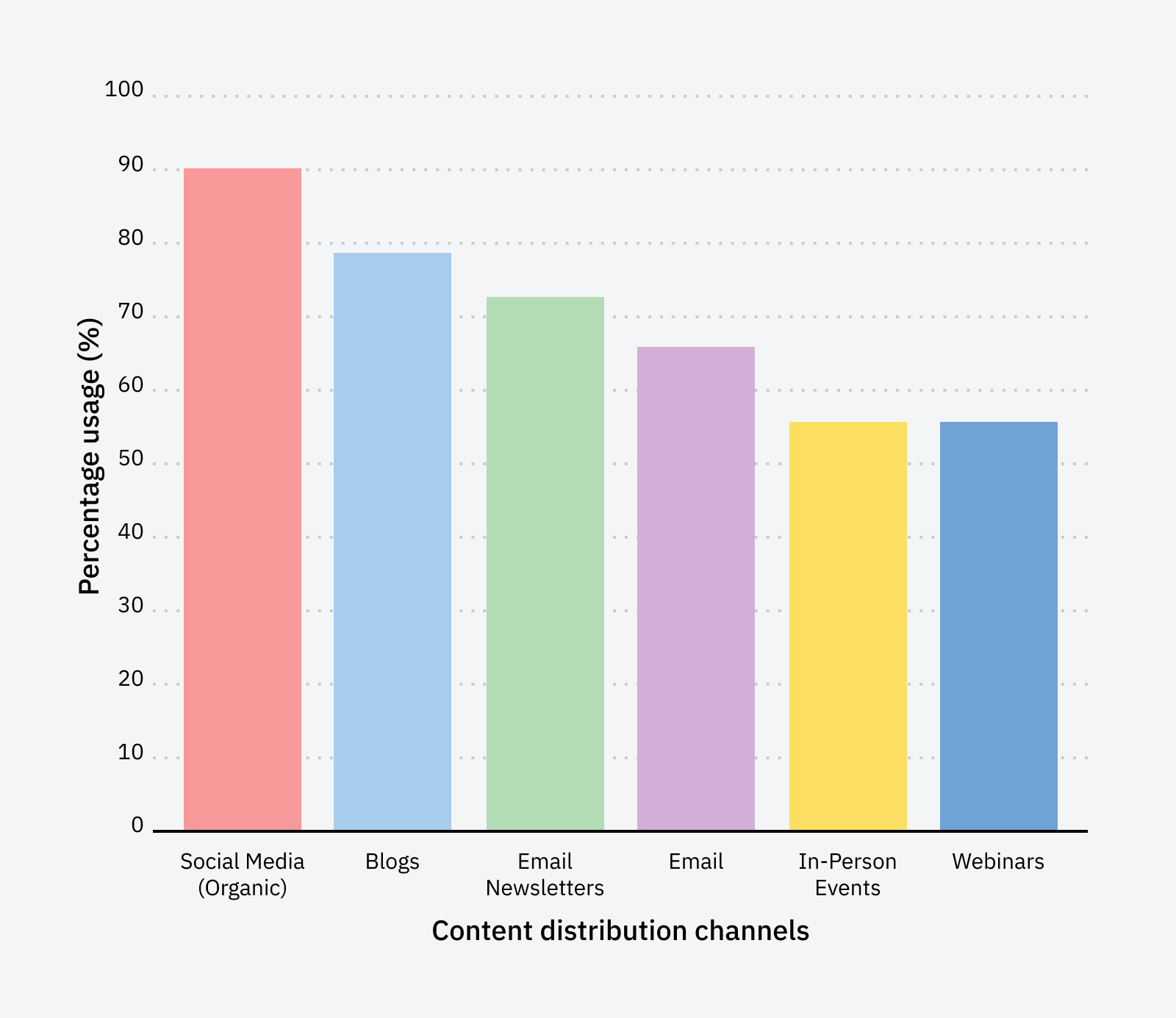 Emails with subject lines in the 61-70 characters range have the highest open rate, on average. (GetResponse). The average time a reader allocates for a newsletter after opening it is only 51 seconds. Participants of the study fully read only 19% of newsletters. (Nielsen)95% of marketers who use generative AI for email creation rate it “effective”, with 54% rating it “very effective.” (Hubspot)71% of marketers said that they rely on email engagement to evaluate content performance. That’s an equal score to website traffic and only 2 percentage points lower than conversions. (CMI) On average, emails containing video increased open rate by 5–15 percentage points and click-through rate by 0.24–2.23 percentage points compared to emails without embedded videos. (GetResponse) Most marketers use personalization in emails. 71% use personalization in subject lines, while 63.7% personalize emails using dynamic content. (Litmus)
Emails with subject lines in the 61-70 characters range have the highest open rate, on average. (GetResponse). The average time a reader allocates for a newsletter after opening it is only 51 seconds. Participants of the study fully read only 19% of newsletters. (Nielsen)95% of marketers who use generative AI for email creation rate it “effective”, with 54% rating it “very effective.” (Hubspot)71% of marketers said that they rely on email engagement to evaluate content performance. That’s an equal score to website traffic and only 2 percentage points lower than conversions. (CMI) On average, emails containing video increased open rate by 5–15 percentage points and click-through rate by 0.24–2.23 percentage points compared to emails without embedded videos. (GetResponse) Most marketers use personalization in emails. 71% use personalization in subject lines, while 63.7% personalize emails using dynamic content. (Litmus)Keep learning

 MikeTyes
MikeTyes 































